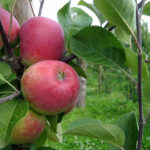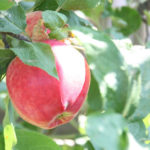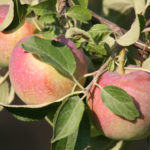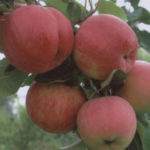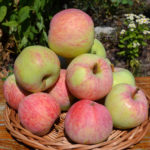Apple variety Airlie Geneva
Despite the fact that apples are available to consumers almost all year round, summer varieties of this crop are always welcome residents in the garden. They are the ones who open the new apple season, allowing all apple lovers, as they say, from a branch, to taste this juicy and healthy fruit without waiting for autumn. Currently, domestic gardeners have many early varieties of both domestic and foreign selection at their disposal. And I must say that foreign cultures adapt very well in most of the territory of Russia. But today let's talk about a variety that loves warm and temperate climates - this is the Early Geneva apple tree. The culture belongs to American selection, bred at the Geneva experimental station as a result of a crossing of the Quinti varieties (Canadian selection, Crimson Beauty x Red Melba) and Julired in 1964. From 176 seedlings in 1973, one was selected, which was originally identified as NY 444, and then was renamed Geneva Early, or Geneva early. Since 1982, the variety has been widespread in America. The American novelty was entered into the State Register of Breeding Achievements of Russia in 2017 and received admission in the Central Black Earth Region (Kursk, Voronezh, Belgorod, Oryol, Lipetsk and Tambov regions). The applicant and originator was Sady Belogorya LLC. Also, the variety is familiar to Ukrainian gardeners, it has taken root well in the Crimea.
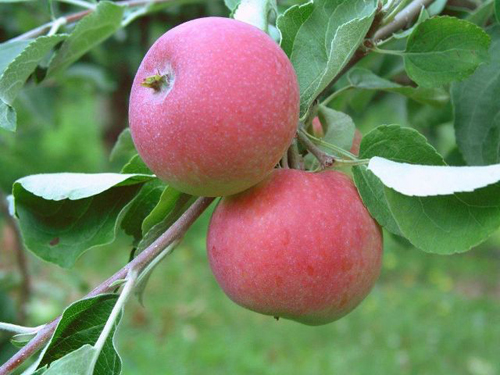
Description
The apple tree is characterized by an average growth rate, but at a young age the growth force is much higher than that of a plant that has entered the fruiting period. As a rule, the tree is medium-sized, 2.5 - 3.5 meters high. But the size is greatly influenced by the stock, so sometimes plants are described as vigorous. The crown is of medium density, spreading, broadly oval. True, the State Register describes the shape of the crown as fusiform. The branches are located compactly, they depart from the trunk at an angle close to a straight line, the ends of the branches are always directed upwards. Shoots of medium thickness, covered with brownish bark, pubescent. The leaves are green, large, elongated-oval, the apex is short-pointed, the base is arcuate, the edges are large-wavy, serrate. The surface of the leaf blade is dull, wrinkled, and the nerve is rough. The petiole is uncolored, slightly pubescent, of medium length and thickness. Stipules are elongated, lanceolate. The flowers are five-petal, saucer-shaped, white, of medium size. The edges of the petals are slightly wavy. Fruiting of a mixed apple tree, the harvest is formed mainly on simple and complex ringlets. In the southern regions, the variety can bear fruit on last year's increments.
Earley Geneva fruits are externally attractive, although they can hardly be called large. According to the State Register, the mass of the apple is about 90 grams, the diameter is about 8 cm. True, there is evidence from gardeners that the weight of the fruit can be quite weighty - 150 or even 200 grams. The apples are of the correct round-conical or flat-round shape, with a smooth surface. The funnel is blunt-conical, medium in width and depth, without traces of rustiness. The saucer is wide, not deep, smooth. The calyx is medium, often closed. The peduncle is straight, oblique, of medium length and thickness. The skin is shiny, with a slight waxy coating. The main color is greenish, sometimes with yellowness. The integumentary covers almost the entire surface of the fruit in the form of a blurred blush of red-pink color. Due to their gray color and small size, subcutaneous dots are poorly visible against a bright background. The pulp is pleasant, very light creamy color, medium-dense, fine-grained, tender, semi-oily, pleasant, but weak aroma. The taste is very good, sweet and sour, with spicy notes, the State Register defines the variety as a table variety. Tasting score from 4.1 to 4.5 points. But some gardeners call the taste rather sour.100 grams of pulp contains: sugars 7.6 - 10.39%, dry matter 12.8%, iron 0.16 mg, magnesium 5 mg, phosphorus 11 mg, potassium 107 mg, vitamin C 4.6 - 10.5 mg.
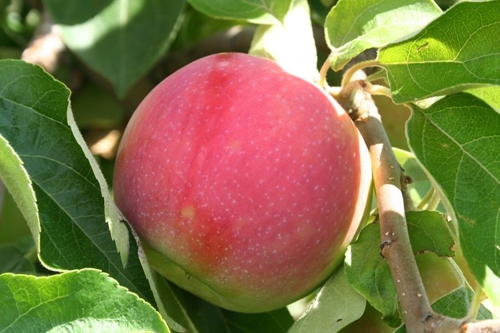
Characteristics
- The apple tree is very fast-growing. The tree begins to bear fruit within a year after planting. True, in order for the seedling to get stronger, it is recommended to remove the first flowering almost completely;
- flowering occurs early, but the flowers are resistant to recurrent cold snaps;
- Earley Geneva attracts with its early ripeness. Or rather, even to say super early, since the fruits of our heroine ripen a whole week earlier White filling... The State Register classifies the variety as early summer. In the warm Krasnodar Territory, crops can be harvested in mid-July. But the usual ripening period in central Russia and the United States is the last decade of July - early August. The early product is competitive in the market, therefore the variety is considered promising by small and large farmers;
- the process of fruit ripening does not occur simultaneously, which is why the harvest will have to be done in 2 - 3 passes. This characteristic makes industrial cultivation somewhat troublesome, but for a private garden, uneven ripening will extend the period of consumption. Moreover, the strength of fastening the fruit to the branch is strong;
- annual yield, stable. The productivity is very good. The first fruiting will bring 5 kg, but this figure increases every year. According to the State Register, the average apple yield was 152.3 c / ha. Up to 50 kg of marketable fruits are removed from one adult tree;
- winter hardiness for warm and temperate regions is quite sufficient. The tree can withstand frosts down to -26 ° C. The State Register estimates the plant's ability to withstand unfavorable winter conditions as high;
- drought resistance of the variety is high. But without watering, the fruits will be small;
- heat resistance is average. In very hot weather, the metabolism in plant tissues decreases, development is suspended;
- Airlie Geneva's immunity is not high enough. Scab resistance is weak. The State Register notes that the tree was affected by this disease up to 20%. Other sources state that the apple tree is highly resistant to fire blight and powdery mildew. There is resistance to apple aphid;
- birds attracted by the bright color of the fruit can cause significant damage to the crop;
- transportability at a low level. The apple pulp is not firm enough; during long-term transportation, the fruits may receive mechanical damage and lose their presentation;

- the harvested crop can be stored in the refrigerator for about 3 weeks;
- use the harvested crop universally. First of all, the variety is valued for the ability to use early apples in their natural form. But they are also suitable for processing. From the fruits you can make fruit puree, baking stuffing, jam, mousse, juice, compote, cider, fruit salad.
Pollinators
Earley Geneva is not a self-fertile species. To enjoy decent results, you need to plant a suitable pollinator in pair with it. But our heroine blooms at a very early date, so picking up a neighbor is not so easy. However, there are apple varieties that do an excellent job. Among them are already well-known apple trees to the Russian gardener and not very familiar ones: Embessy (Embassy), Idared, Discovery, Delicacy, Caterina, James Grieve, Yellow Olive.
Planting and leaving
Autumn or spring is suitable for planting a plant. But it will be necessary to complete the procedure on time. If you delay planting in the fall, then the root system will not have time to adapt to the cold, spring delay will also adversely affect the overall development of the seedling. The rootstock is of great importance for the normal formation and future productivity of our heroine.In Russia and Ukraine, the M9 is the most popular for this purpose. Suitable soils should be neutral, loose and nutritious. The best option is loam. The planting site is best prepared in a sunny area, although the apple tree can develop in partial shade. Formative and thinning pruning is best done in the spring, sanitary - as needed. Weak scab resistance will require extreme efforts from the gardener, because not only preventive treatments will be needed. In the event of a manifestation of the disease, you will have to act immediately so that the fungus does not spread to the entire plant. Watering of mature trees is carried out as needed, maintaining soil moisture in a moderate state. For seedlings, the moisturizing procedure is carried out more often. Top dressing is applied according to the standard scheme. But at the same time, carefully observe the leaves - their color and condition will tell you which element deficiency needs to be replenished as quickly as possible.
Earley Geneva is a very interesting American variety. But it can also be called contradictory. Indeed, in addition to the advantages, the apple tree also has disadvantages. Ordinary gardeners are very happy with the new acquisition, they are pleased with the excellent early maturity, super early fruiting, excellent marketability of apples and, which is important for the gardener, the gradual ripening of the crop. True, some people call the taste of the fruit sour. But, in general, an unpretentious plant is deservedly successful. The culture is not very suitable for industrial cultivation - it requires frequent treatments for fungal diseases. Will increase the cost of fruit and the need to hire workers for harvesting more than once. But this is more likely to refer to large landings. In a small farm garden, it is quite possible to provide good care for our heroine in order to get the expected profit.
